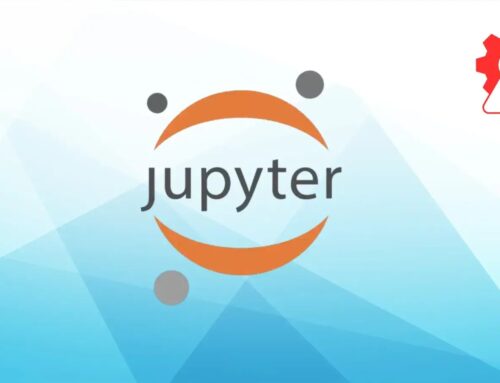
Threat Actors Abuse AI Website Creation App to Deliver Malware
The Double-Edged Sword: When AI Website Builders Fuel Cybercrime
The democratization of technology often brings immense benefits, but it also creates unforeseen vulnerabilities. An ironic twist now sees artificial intelligence, designed to simplify web development, being weaponized by threat actors. This post delves into the disturbing trend of cybercriminals exploiting AI website creation applications, specifically focusing on how platforms like “Lovable” are being abused to launch sophisticated phishing campaigns and deliver malware. Understanding this evolving threat landscape is crucial for cybersecurity professionals, IT teams, and anyone seeking to navigate the digital world safely.
AI-Powered Simplicity: A New Vector for Deception
AI-powered website builders, lauded for their ability to generate functional websites from simple natural language prompts, have dramatically lowered the barrier to entry for web development. What once required coding expertise or extensive design knowledge can now be achieved by virtually anyone. This ease of use, however, is a double-edged sword. Threat actors have quickly identified this as an opportunity to craft highly convincing fraudulent websites with minimal effort.
- Reduced Technical Barrier: Traditional phishing site creation demands a certain level of technical proficiency in web design, hosting, and domain management. AI tools eliminate much of this complexity.
- Enhanced Verisimilitude: AI can rapidly generate professional-looking layouts, integrate stock imagery, and mimic legitimate brand aesthetics, making phishing sites significantly more believable.
- Scalability: The speed and automation offered by AI mean threat actors can churn out numerous deceptive websites in a fraction of the time it would take to build them manually.
The “Lovable” Case Study: A Platform Under Siege
The “Lovable” platform, intended to make web creation accessible to all, has reportedly become a prime example of this abuse. Cybercriminals are leveraging its natural language processing capabilities to instruct the AI to construct phishing pages that perfectly replicate legitimate login portals, e-commerce sites, or financial institutions. These convincing fakes are then used to:
- Harvest Credentials: Users are tricked into entering sensitive information, such as usernames, passwords, credit card numbers, and personal identifiable information (PII), directly onto the imposter sites.
- Distribute Malware: Phishing sites can host malicious payloads, initiating drive-by downloads or tricking users into downloading seemingly legitimate files that are, in fact, malware. This can range from ransomware and spyware to banking Trojans and remote access tools (RATs).
- Propagate Scams: Beyond direct data theft, these AI-generated sites facilitate various scams, including fake customer support, investment frauds, and lottery scams, all designed to extract money or further exploit victims.
Tactics and Techniques Employed by Threat Actors
Threat actors employing AI website builders are not just creating static pages; they are developing sophisticated campaigns:
- Dynamic Content Generation: Some AI tools allow for dynamic content, which can be exploited to personalize phishing attacks, making them even more potent.
- Evading Detection: Because these sites are built on legitimate platforms, initial detection by traditional blacklisting or reputation-based systems can be delayed. The rapid deployment and takedown of these sites also make them ephemeral and harder to track.
- Social Engineering Amplification: The convincing nature of AI-generated sites significantly enhances social engineering efforts, as victims are less likely to suspect a well-designed page. These sites are often paired with compelling email or SMS messages to drive traffic.
Remediation Actions and Defensive Strategies
Combating this evolving threat requires a multi-faceted approach, combining technical solutions with robust user education:
- For Individuals and Users:
- Verify URLs: Always scrutinize the URL for any discrepancies, even subtle ones. Check for typos, extra characters, or unusual top-level domains.
- Hover Before Clicking: Before clicking on any link in an email or message, hover your mouse over it to see the true destination address.
- Multi-Factor Authentication (MFA): Enable MFA on all critical accounts. Even if credentials are stolen, MFA can prevent unauthorized access.
- Be Wary of Urgent Requests: Phishing emails often create a sense of urgency. Slow down, breathe, and verify any unexpected requests through official channels.
- Report Suspicious Activity: Report phishing attempts to your IT department, email provider, or relevant authorities.
- For Organizations and IT Professionals:
- Advanced Threat Protection (ATP): Implement email and web security solutions with ATP capabilities that include AI-driven anomaly detection and sandboxing to identify novel phishing attempts.
- Domain Name System (DNS) Filtering: Utilize DNS filtering services to block access to known malicious domains and newly registered suspicious domains.
- Security Awareness Training: Conduct regular, engaging security awareness training for all employees, emphasizing the latest social engineering tactics and phishing indicators.
- Browser Security Extensions: Encourage or enforce the use of browser security extensions that warn users about phishing sites and suspicious downloads.
- Incident Response Plan: Maintain a clear incident response plan to quickly address reported phishing incidents, including site takedown procedures and user notification.
- Threat Intelligence Feeds: Subscribe to and integrate threat intelligence feeds that provide proactive warnings about emerging phishing tactics and compromised domains.
Tools for Detection and Mitigation
| Tool Name | Purpose | Link |
|---|---|---|
| PhishTank | Community-contributed database of verified phishing URLs. | https://www.phishtank.com/ |
| BrandShield | Digital risk protection, including phishing detection and brand impersonation. | https://www.brandshield.com/ |
| Microsoft Defender for Office 365 | Advanced email security, including anti-phishing, safe links, and safe attachments. | https://www.microsoft.com/en-us/security/business/microsoft-365-security/microsoft-defender-for-office-365 |
| Proofpoint Email Protection | Comprehensive email gateway security with advanced threat defense, including phishing and malware. | https://www.proofpoint.com/us/products/email-protection |
| Cofense PhishMe | Security awareness training and phishing simulation platform. | https://cofense.com/product-services/phishme/ |
The Evolving Threat Landscape: Staying Ahead
The abuse of AI website creation applications underscores a critical challenge in cybersecurity: the constant adaptation of threat actors to new technologies. While AI offers incredible potential for legitimate innovation, its misuse can dramatically lower the bar for sophisticated attacks. Vigilance, continuous education, and the deployment of advanced security measures are more critical than ever. The fight against cybercrime is an ongoing intellectual arms race, and understanding how new tools are co-opted is the first step in effective defense.





